Many years ago I visited Sorrento but wasn’t sure what to make of it. I returned again this year and I am still not sure what it is that makes it tick, but tick it certainly does.
Sorrento has been a popular tourist destination for almost two centuries, having been an essential stop on the Grand Tour in the 19th century, the poet Lord Byron being one who sang the praises of the Sorrentino air. Of course it does have the brooding volcano Vesuvius, but somehow this doesn’t make one uneasy as does say, Mt. Etna in Sicily.
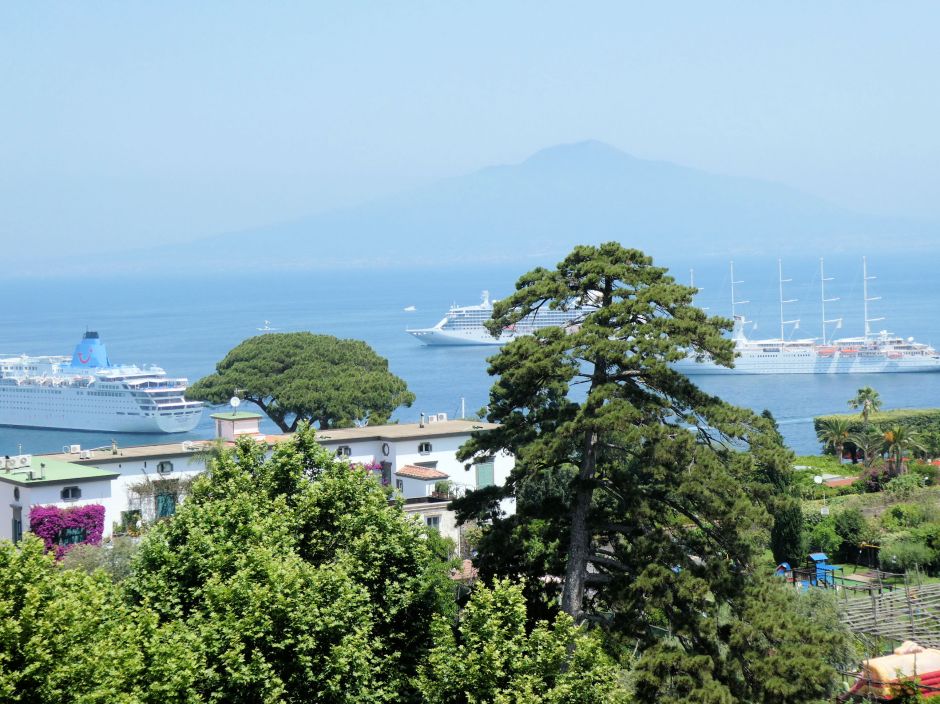
The perfume in the air is one of the things that makes this town different from most other resorts. Sorrento smells of citrus because the streets are lined with orange and lemon trees and there are at least 3 lemon plantations right in the town which can be visited and where you can sample their homemade Limoncello. We popped in most days for a tasting as one was opposite our hotel, and it was hard to resist.

The town is perched picturesquely on a plateau above the sea and there are spectacular views over the Bay of Naples and towards Vesuvius from most of the terraces around. Despite many of its old buildings having been demolished most of the historic town centre remains reasonably intact, the mellow old buildings giving the town an authenticity that many other towns lack. Along with its sister towns, Sant’Agnello, Piano di Sorrento and Meta di Sorrento which spread over land that was once primarily agricultural, visitors will find here an experience second to none.

The Best Gelato in Sorrento 
El Duomo at Night – Sorrento
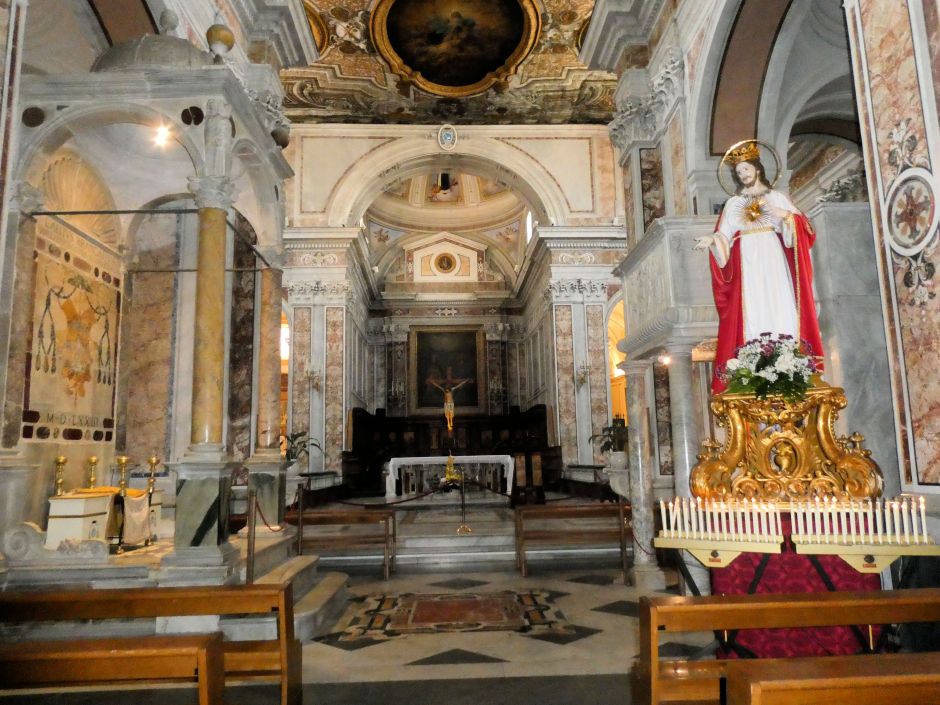
Interior of Church of S. Antonio 
Best value in Sorrento, the tour with town train 
Quiet side street 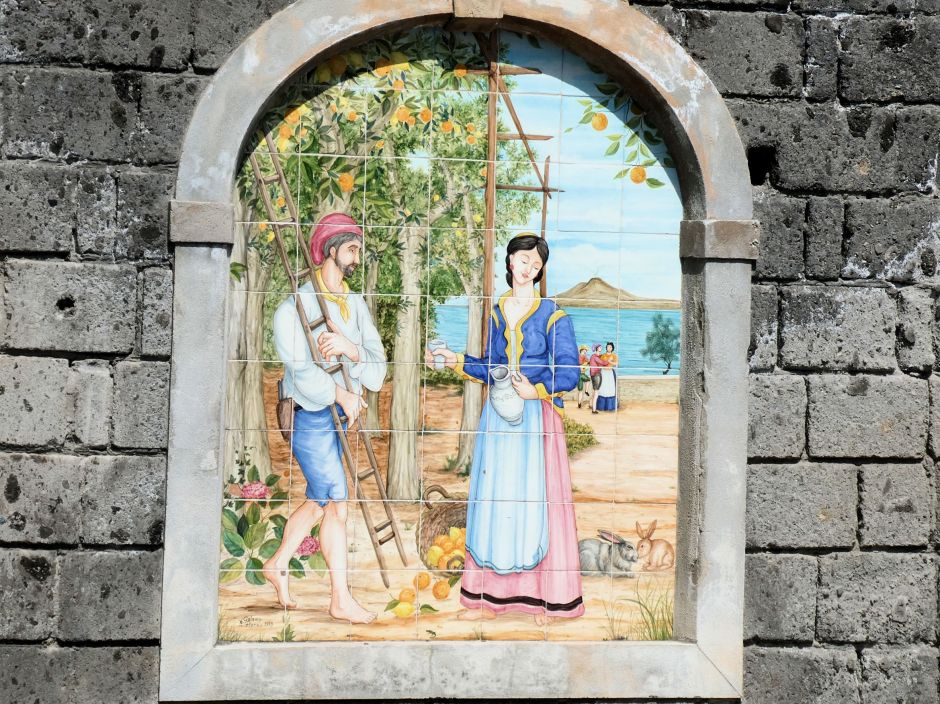
Niche plaques like these all over town 
Long Winding Road down to Marina Piccola 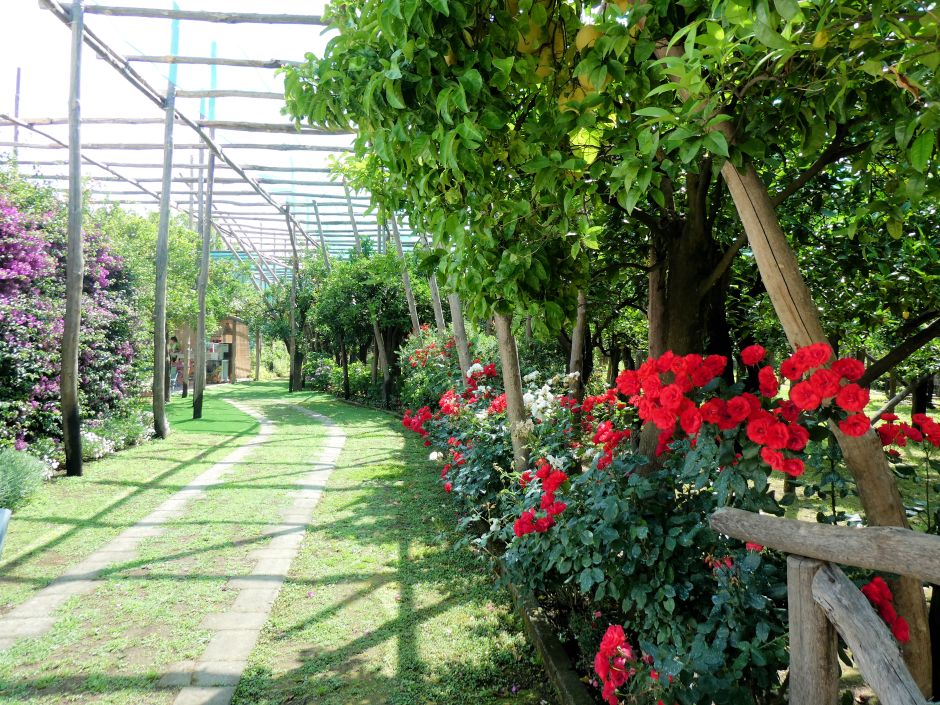
Lemon Grove in Town
However, it must be said that Sorrento caters overwhelmingly for the English-speaking market – although it has its fair share of visitors from other countries. Menus are in English and everything seems to be geared towards English-speaking travellers. Sometimes the crowds of cheerful tourists thronging the streets and sitting at the bars in the Piazzo Tasso made me feel as though I hadn’t left home. But then along would come a couple of smiling Italian troubadours, the plaintive notes of “Come Back to Sorrento” or “O Sole Mio” plucked from a couple of mandolins would fill the air, and the Italian atmosphere would be restored.

I got used to hearing these two tunes throughout my stay, they are in the DNA of the place. As in Sicily where every other shop is playing Speak Softly Love the haunting tune from The Godfather trilogy, in Sorrento the shops offer accordions, mandolins and Neopolitan songs. Music is everywhere. Bars belt out arias from popular operas, the market stalls entertain with the latest Italian pop songs, and Neopolitan songs are everywhere because the Sorrentinos themselves are proud to have such a legacy of world renowned melodies and like listening to them, but it never gets too loud.

The main square, Piazzo Tasso, is named after the poet Torquato Tasso and is the focal point for the evening passeggiata where the locals come to see and be seen. This is when you know you are in Italy, when everyone is in their finest clothes and sauntering up and down streets – many paved with lava from Vesuvius – that radiate from Tasso into the old town and down to the Port.

A smaller Piazza, S. Antonio, named after the Basilica of the same name which is in the square, is less crowded but a good place to sit and watch the Italians park their cars (a whole post could be written on this alone).
And just a few steps from here and you come to the road that leads down to one of Sorrento’s two ports, the Marina Piccolo.

There are two ports in Sorrento but no footpath between them so they each have to be approached from the town separately. Marina Piccola is no great distance from Tasso and is a pleasant walk but as it has 130 steps leading down to the beach it may be advisable to think about getting the bus back – or down to it for those who find steps difficult.


Although Piccola means small, it is actually the bigger port (Italians love to confuse tourists), the port from where the ferries to Capri, Naples, Ischia and Amalfi depart and the port at which the cruise ships dock.

The more picturesque port of Marina Grande may be smaller but it has a village-like atmosphere and is where the majority of the seafood restaurants are to be found (one of them a fishermen’s co-operative where the fish is truly great). Nestled into a cove on the Amalfi Coast it is one of the most popular seaside resorts in Italy, homes and shops rising above the curve of the rocks, creating a harmonious, rustic charm. Sheltered by the promontory which separates it from the town, the harbour community retains time-honoured customs and maintains its primary source of survival – fishing.

Steep Street in Marina Grande 
House on top of Rocks (winding path to top) 
Beach at Piccolo Grande
The scene in the port at sunset when the day-trippers have gone and the fishermen clean their nets and drink wine at open-air tables by the sea is evocative of an age which has all but vanished. The best way to visit this port is to take the bus down to the main square, walk along the seafront and then take the elevator back to the town when you are ready.
There is not much sand in Sorrento unfortunately, and access to the sea is mostly from wooden boardwalks built out over the water. Both ports have small private beaches where entrance fees are usually around €10 and there is a small public beach on Marine Piccola but this is always crowded.
Best if all, Sorrento is well placed for visiting the surrounding areas, for trips to Pompii, Herculaneum and Naples, which are all accessible by train, bus or organized tour, or less taxing perhaps, Amalfi and Ravello, along the magnificent coastal drive.
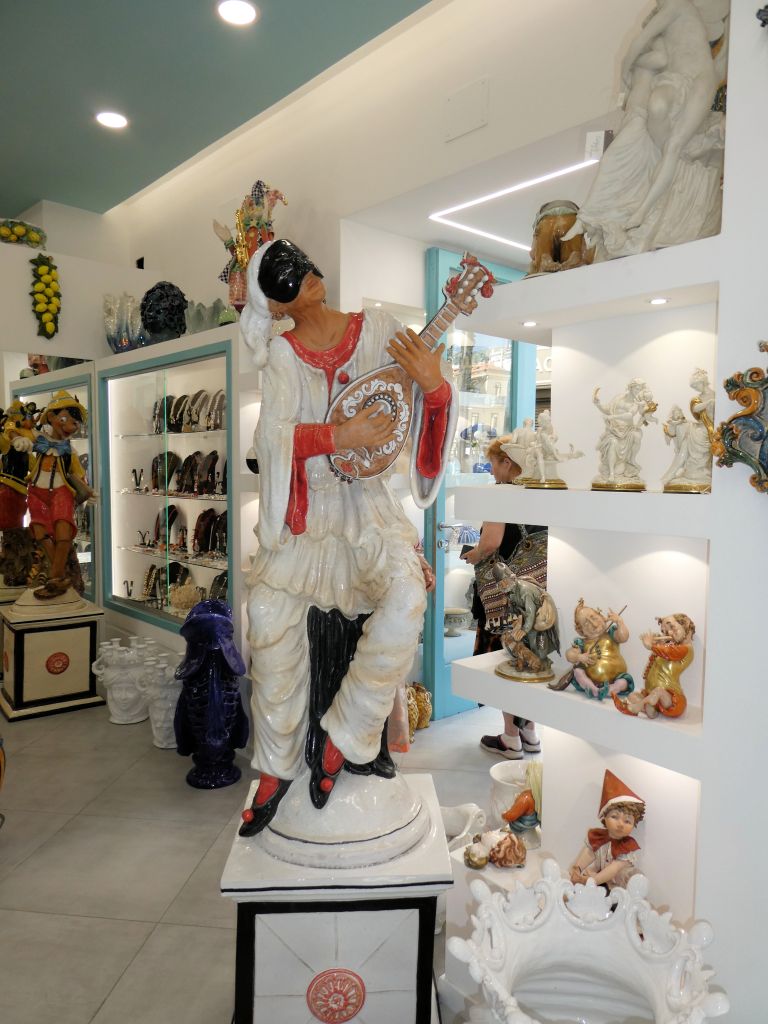




It looks beautiful. We spent a few days on Capri once and this evokes memories of that.
LikeLiked by 1 person
As you’ll see above, I didn’t get to Capri but I know I missed something special. When I was young it was the place I most wanted to go to. It had some sort of magic about it, whether it was the song or reading The Story of San Michele, I can’t remember. My mother always said it was her fantasy land, maybe I got it from her.
LikeLike
We loved it.
LikeLiked by 1 person
We used Sorrento as our base, Mari, and we managed Capri and Ischia as well as the land based sites. It was a good holiday 🙂 🙂
LikeLiked by 1 person
My energy levels aren’t what they once were, so I didn’t manage Capri or Ischia. I was also put off the Capri trip by the numbers queueing and as my walking is a trifle dodgy I worried about getting on and off the boat. Guess it’s one of those places I won’t see, but there are others still to come, and I did enjoy the gentle strolling in the nearby towns thanks to a good bus service in Sorrento.
LikeLiked by 1 person
It makes such a difference if one has a connection to a place when visiting and I’m sure your father’s tales must have helped a lot. I’ve been reading A Chill in the Air and War in the Val d’Orcia by Iris Ortiga about the war in Italy. Quite fascinating books but written from the p.o.v. of an aristocrat who moved in embassy circles etc. one is unsure how much she really knew about the peasants (say of Sicily and southern Italy) and how they felt. She wasn’t on Mussollinni’s side either but then as they say about Hitler, somebody was! It was about 50 years when I was last there tool.
LikeLike
Italy is the one major European country that I have never visited, hence my interest in your accounts of your travels there.
This post on Sorrento gives a very full description of the resort and, having read it, I almost feel as though I have been there!
You comment on the amount of English spoken there. This is common throughout Europe now. Even in France, English is widely spoken. Brexit or no, the language will remain in Europe both for the purposes of tourism and – increasingly – as a lingua franca, not only between nations but also within countries such as Belgium and Switzerland in which different languages are spoken.
As usual, your photos enhance your post and provide persuasive evidence of Sorrento’s charms.
LikeLike
Thanks for the memories. I spent a week in Sorrento more than 50 years ago with a school friend of mine. We were both tracing the wartime stay of our fathers who were stationed in the area and were both fascinated by it. They were not tourists of course, but it’s impression lasted and was probably the reason why the British memories stayed.
LikeLike